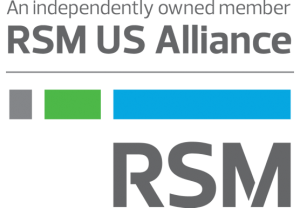Insights
Tax technology for investment partnerships
ARTICLE | April 07, 2023
Authored by RSM US LLP
Organizations in many industries—from real estate to business and professional services to asset management—look to partnerships to help streamline their operations, allocate their profits and offer flow-through tax treatment to their partners, among other benefits.
This is especially the case with various alternative investment funds such as private equity funds. As the industry has matured, private equity funds have used partnerships to help with a range of issues, including the location of investments—domestic or offshore—partner allocation models and partner preferences. To achieve this, private equity funds have added co-investment fund entities, blocker corporations and various other types of investment vehicle funds.
The result has been an increasingly complex business landscape that fund managers and chief financial officers have contended with as they attempt to attract and satisfy investors.
As the complexity has grown, so has the challenge of tax compliance. Innovation in tax preparation has struggled to keep pace with the sophisticated structure of investment funds, such as private equity and hedge funds.
Now, though, technology is catching up.
Modern solutions that automate, manage and analyze data have revolutionized how a tax function can serve investment partnerships by:
- Mitigating risk and increasing transparency for key stakeholders
- Improving the timeliness of compliance efforts
- Enhancing efficiencies in reporting
- Providing timely business insights that help organizations make decisions that increase liquidity and longer-term tax savings
- Allowing for fund access to reports and tools
By automating data flows and tax allocations, these solutions address the compliance challenges that have intensified as partnership structures have become more complex.
Partnerships in their myriad forms offer flexibility to do special allocations, which at various times during the life of the fund can be complex. Partnerships offer asset management funds the needed flexibility for various partner allocations that are called for and required according to limited partnership agreements. These are commonly referenced as waterfall, carried interest and claw-back allocations. There are layering and aggregate methods used for partner allocations as well.
In one example, perhaps one private equity fund partnership sits on top of other fund partnerships, along with separate arms to each entity—creating what are commonly referred to as tiered structures. Attorneys, along with transaction advisory and tax professionals, have suggested tiered entity fund structures to solve common tax-sensitive partner concerns, such as offshore and tax-exempt investment tax issues. But the allocations for these structures can be complex. Without technology to support them, the manual processes required are laborious and susceptible to human error.
Then there is a firm’s need to manage the sheer volume of pass-through investments. After all, keeping track of the various investments or allowing fund partners to see the tax implications of those investments without support of partnership tax technology requires too many hours to produce real-time insights.
Looking to automation and data analytics
When it comes to tax compliance, the process has traditionally been labor-intensive and cumbersome. Many chief financial officers and general partners at funds longed for automation and data analytics for partnerships, and they have welcomed recent advances.
Partnership tax compliance technology has opened the door for much more data analysis. With automated data inflows and integrated data visualization capabilities, stakeholders can quickly see the tax implications of investment decisions. Automated tiering and allocation capabilities enable a tax function to address partners’ questions about their Schedules K-1 and K-3 and release them in a timelier fashion.
Partners in a fund structure who are invested across many private equity funds can now see and appreciate information much more efficiently with the ease of a digital platform.
The takeaway
For too long, the tax benefits of investment partnership structures came with increasingly complex and cumbersome compliance challenges. Fund CFOs’ demand for business insights, more timely tax reporting and better responsiveness to investors have facilitated the development of modern partnership tax technology solutions.
The automation of tax compliance processes offers advantages such as fund CFOs and GPs as transparency for investors, simplified calculation of complex allocations and a simplification to fund entity tiering.
In the end, it’s about meeting the expectations of the fund founders and their partner investors. In an increasingly digital world, in which everything from watching movies to buying pet food is on demand, they expect nothing less—so why not meet those expectations in tax reporting?
Let's Talk!
Call us at +1 213.873.1700, email us at solutions@vasquezcpa.com or fill out the form below and we'll contact you to discuss your specific situation.
This article was written by Jerry Musi and originally appeared on Apr 07, 2023.
2022 RSM US LLP. All rights reserved.
https://rsmus.com/insights/services/business-tax/tax-technology-for-investment-partnerships.html
The information contained herein is general in nature and based on authorities that are subject to change. RSM US LLP guarantees neither the accuracy nor completeness of any information and is not responsible for any errors or omissions, or for results obtained by others as a result of reliance upon such information. RSM US LLP assumes no obligation to inform the reader of any changes in tax laws or other factors that could affect information contained herein. This publication does not, and is not intended to, provide legal, tax or accounting advice, and readers should consult their tax advisors concerning the application of tax laws to their particular situations. This analysis is not tax advice and is not intended or written to be used, and cannot be used, for purposes of avoiding tax penalties that may be imposed on any taxpayer.
RSM US Alliance provides its members with access to resources of RSM US LLP. RSM US Alliance member firms are separate and independent businesses and legal entities that are responsible for their own acts and omissions, and each is separate and independent from RSM US LLP. RSM US LLP is the U.S. member firm of RSM International, a global network of independent audit, tax, and consulting firms. Members of RSM US Alliance have access to RSM International resources through RSM US LLP but are not member firms of RSM International. Visit rsmus.com/about us for more information regarding RSM US LLP and RSM International. The RSM logo is used under license by RSM US LLP. RSM US Alliance products and services are proprietary to RSM US LLP.

Vasquez & Company LLP is a proud member of the RSM US Alliance, a premier affiliation of independent accounting and consulting firms in the United States. RSM US Alliance provides our firm with access to resources of RSM US LLP, the leading provider of audit, tax and consulting services focused on the middle market. RSM US LLP is a licensed CPA firm and the U.S. member of RSM International, a global network of independent audit, tax and consulting firms with more than 43,000 people in over 120 countries.
Our membership in RSM US Alliance has elevated our capabilities in the marketplace, helping to differentiate our firm from the competition while allowing us to maintain our independence and entrepreneurial culture. We have access to a valuable peer network of like-sized firms as well as a broad range of tools, expertise and technical resources.
For more information on how Vasquez & Company LLP can assist you, please call +1 213.873.1700.
Subscribe to receive important updates from our Insights and Resources.
